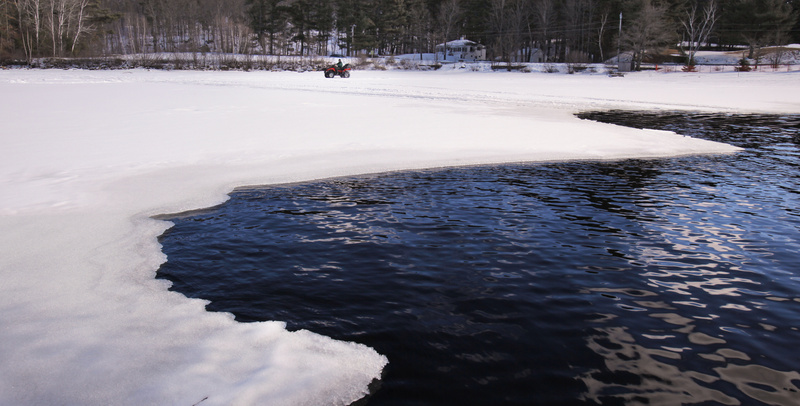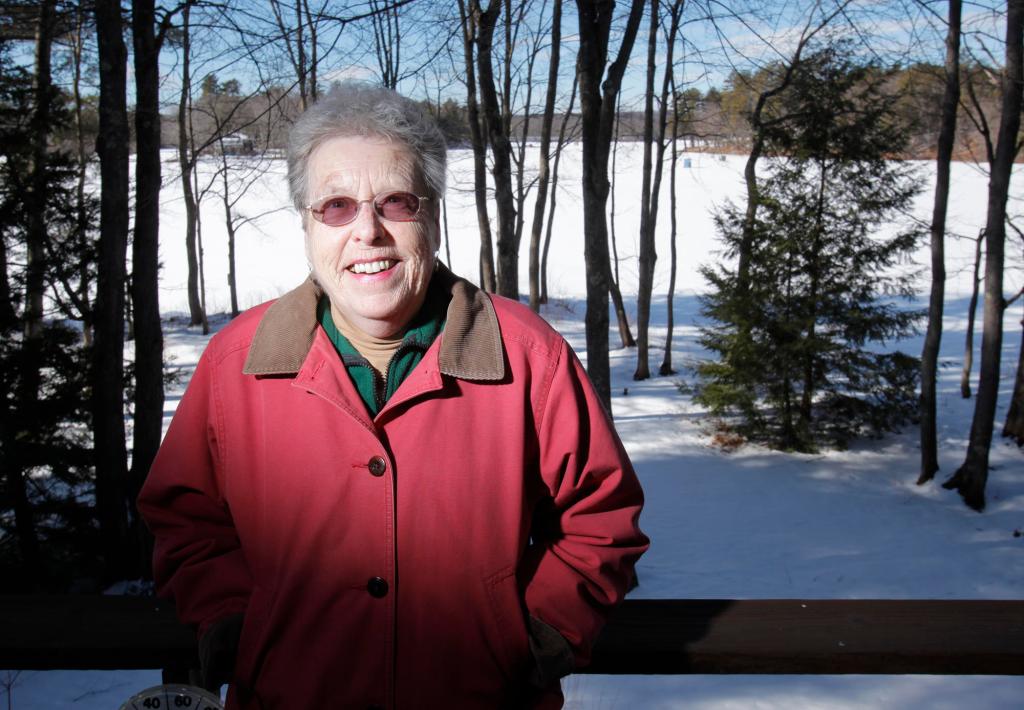SHAPLEIGH – Some neighbors get together at block parties and progressive dinners, but a different type of gathering is sweeping through the lakes region of northwestern York County: septic socials.
While it may seem odd to sip wine and nibble snacks while discussing the state of one’s septic system, the events are proving to be a powerful new weapon in combating lake pollution, clean-water advocates say.
“It’s amazing, once it gets going. It’s educational and fun,” said Pat Baldwin of Shapleigh, who has attended about a half-dozen septic socials.
The gatherings, attended by 232 people in the past five years, are among the steps taken around Mousam Lake that have led to a turnaround in the lake’s water quality. The federal Environmental Protection Agency highlighted the lake’s return to health in its recently released National Lakes Assessment report. The lake is one of 172 in the nation, and three in Maine, that have won restored status from the EPA.
But Mousam Lake’s recovery has been a long, complicated process that has involved hundreds of volunteers and nearly $1 million, said those involved in the effort. It was jump-started by Baldwin, a lifelong fan of the lake.
When Baldwin started to summer at the lake in the 1940s, the water was crystal clear, the appearance of a motorboat was still a novelty and the shoreline was mostly empty. By the 1990s, there were more than 700 homes and a heavily used public boat ramp along the shore of the 863-acre lake.
The loons had disappeared, and Baldwin noticed green slime growing on the rocks along her waterfront property. “Something was wrong,” she said.
Testing by the Maine Department of Environmental Protection showed that the water quality was being compromised by high levels of phosphorus in the runoff from home construction, lawns, gravel roads and failing septic systems.
The high phosphorus levels were increasing algae growth, and the water got murky. In 1998, the lake was deemed impaired by the DEP and added to its list of about 30 lakes in a similar state.
“We wanted to turn it around,” said Wendy Garland, a DEP environmental specialist.
The idea was to try to keep Mousam Lake from turning into China Lake, which has lost its cold-water fish species despite decades-long restoration efforts.
Working with the Mousam Lake Region Association, Baldwin started making the case to lakefront homeowners, town officials and taxpayers in Acton and Shapleigh that saving the lake was in everyone’s interest.
Baldwin said she had to convince them that not only was a recreational resource at risk, but so were businesses that catered to fishermen, snowmobilers, swimmers and boaters, and anybody who paid property taxes.
The lakefront homes make up 60 percent of the tax base in Shapleigh and 65 percent of the tax base in Acton. If those property values fell because of deteriorating water quality, everyone else’s taxes would go up, Baldwin said.
“No one wants to swim in a green lake,” said Joe Anderson, a project manager for the York County Soil and Water Conservation District and a popular speaker on the septic social circuit.
Lakefront property owners got educational and financial help to reduce soil erosion by replacing lawns with native plants, building retaining walls and letting fallen leaves stay on the ground. So far, about 180 homeowners have taken such steps, at an average cost of $500.
The lake association and the two towns have been paying to hire 10 teenagers in the Youth Conservation Corps who do the erosion mitigation work at no cost to homeowners. Federal and state grants have paid for road reconstruction and other projects to prevent erosion.
The result has been a detectable improvement in the water. The effort has prevented 150 tons of sediment and 130 pounds of phosphorus from washing into the lake each year. Water clarity has improved, so it’s possible to see 18 to 21 feet down, 3 feet deeper than 12 years ago.
The septic socials have worked. During the first year alone, 60 septic systems were replaced or improved. Others have followed.
Along the way, Baldwin has been given a lifetime achievement award from the EPA for her work, and the entire project has become a model for other communities.
Mousam Lake has been dropped from the state’s list of impaired waters. An ice fisherman pulled a 9.02-pound brook trout from the lake last month, a record for York County.
“The fish also think it is a pretty good lake,” said Garland of the DEP.
Mark Labbe of Shapleigh, who was fishing on the frozen lake last week, said he wasn’t aware of all the work that had been done in the past decade, but he supports it. He said he fishes the lake year-round and recognizes that keeping it clean keeps his taxes down.
“You want your waterfront property to be waterfront, not swampland,” Labbe said.
Baldwin and other lake advocates say that despite the improvements in water quality, the restoration effort — including the ever-popular septic socials — will have to continue, to prevent deterioration in the future.
“A lot of people don’t know a lot about this,” Baldwin said.
Staff Writer Beth Quimby can be contacted at 791-6363 or at: bquimby@pressherald.com
Send questions/comments to the editors.




